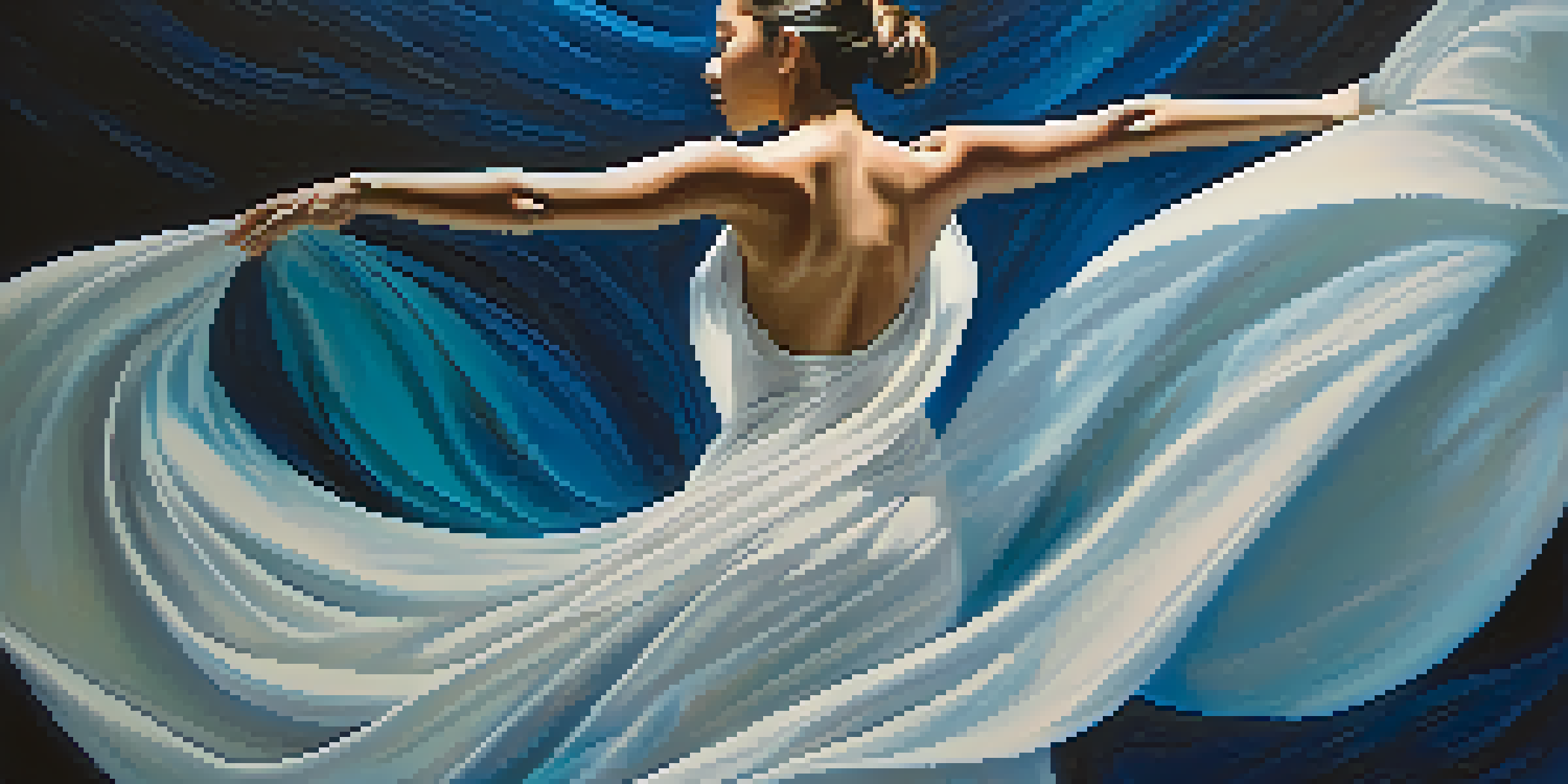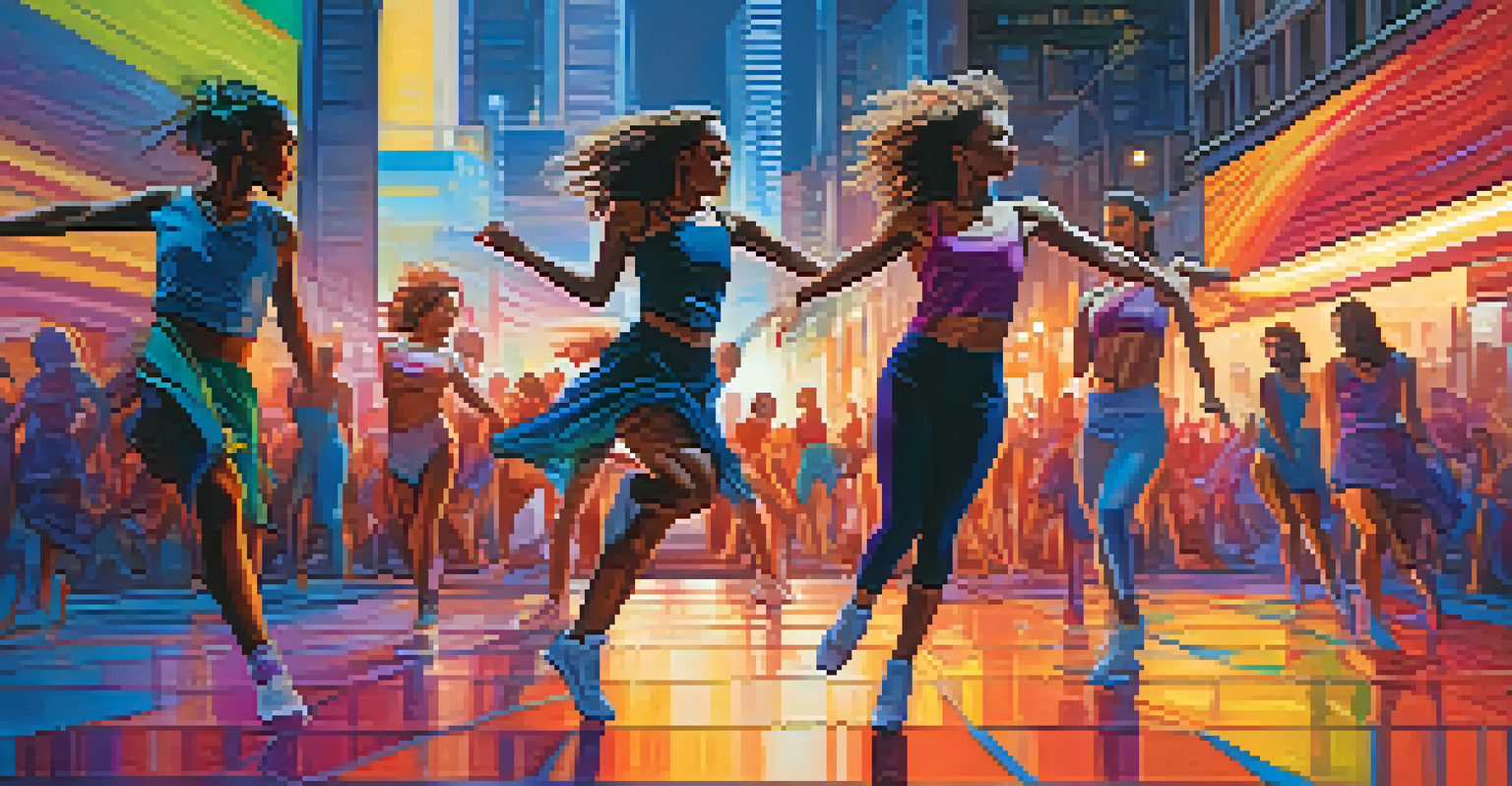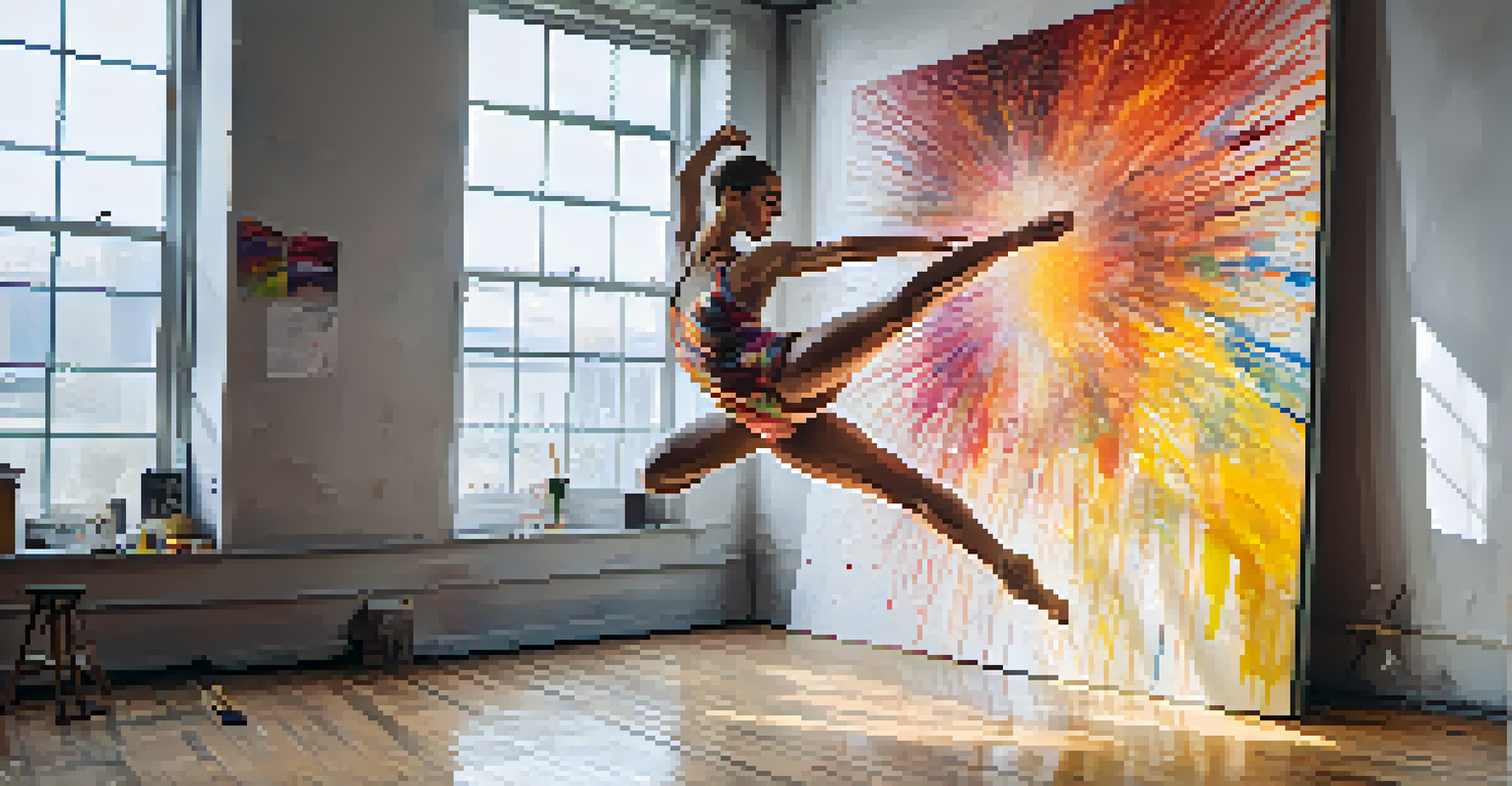The Role of Painters in Dance: A Collaborative Exploration

Understanding the Fusion of Dance and Visual Art
Dance and visual art might seem like separate realms, but they share a powerful connection. Both forms of expression communicate emotions and stories, yet they do so through different mediums. When painters collaborate with dancers, they create a sensory experience that captivates audiences on multiple levels.
Art is the most beautiful of all lies; it is the truth about our emotions and experiences.
This fusion allows dancers to embody the colors and textures painted around them, transforming the stage into a living canvas. Imagine a dancer moving gracefully against a backdrop of swirling colors, where each brushstroke complements their movements. This synergy not only enhances the visual appeal but also deepens the audience's emotional connection to the performance.
Ultimately, the collaboration between painters and dancers blurs the lines between visual and performing arts, inviting viewers to experience a holistic artistic expression. It’s a reminder that creativity knows no boundaries and that innovation often arises from the collaboration of different artistic disciplines.
The Painter's Perspective: Inspiration from Movement
For painters, the fluidity and dynamism of dance can serve as a rich source of inspiration. Observing dancers in motion can ignite a painter’s imagination, leading to the creation of art that captures the energy and emotion of the performance. This inspiration often translates into vibrant color palettes and expressive brush strokes that echo the rhythm of the dance.

Moreover, painters often study the anatomy of dancers, understanding their movements and postures to infuse their artwork with authenticity. This close observation allows painters to portray not just the physicality but also the emotional depth of the dance, creating pieces that resonate with the viewer's own experiences.
Dance and Art Create Immersive Experiences
The collaboration between dancers and painters transforms performances into engaging sensory experiences that captivate audiences.
In this way, the painter’s perspective is deeply intertwined with the art of dance, showcasing how one discipline can enrich the other. The result is a collaborative journey that transforms the creative process into a celebration of both movement and color.
Creating Engaging Backdrops for Dance Performances
Backdrops play a crucial role in dance performances, setting the mood and context for the audience. Painters contribute significantly to this aspect by designing immersive environments that complement the themes of the dance. A vibrant cityscape might energize a contemporary piece, while soft, natural landscapes could enhance a lyrical performance.
Dance is the hidden language of the soul.
These painted backdrops can also tell stories of their own, layering additional meaning onto the dancers' movements. For instance, a backdrop depicting a stormy sea can evoke feelings of struggle and triumph, mirroring the narrative portrayed through dance. This interplay between background and performance creates a richer, more engaging experience for the audience.
Moreover, well-designed backdrops allow for creative lighting effects, further enhancing the visual experience. The collaboration between painters and lighting designers can lead to stunning transformations that mesmerize viewers and elevate the overall impact of the performance.
Exploring Themes and Narratives Through Art
Both painters and dancers often explore similar themes and narratives, making their collaboration particularly enriching. Whether it's love, loss, or identity, these universal themes resonate deeply with audiences. By working together, painters can visually express the underlying themes of a dance piece, creating a cohesive narrative that amplifies the emotional impact.
For example, a dance performance about overcoming adversity might be paired with a series of paintings that depict struggle and resilience. This synchronicity not only provides context but also invites the audience to engage with the material on a deeper level, fostering a greater understanding of the message being conveyed.
Color Enhances Emotional Expression
Strategic use of color in backdrops amplifies the emotional depth of dance, allowing audiences to connect more profoundly with the performance.
Ultimately, this thematic exploration encourages artists to push their creative boundaries and experiment with new ideas. The collaboration between painters and dancers nurtures a space for dialogue, where ideas can evolve and narratives can be told in multifaceted ways.
The Role of Color in Dance Expression
Color is a powerful tool in both painting and dance, influencing mood and emotion. Painters can use color strategically to evoke specific feelings that align with the dancer's performance. For instance, warm colors like red and orange can create a sense of passion and urgency, while cooler shades like blue and green can evoke calmness and serenity.
When dancers perform against a backdrop of thoughtfully chosen colors, it enhances their movements and emotional expression. A dancer clad in flowing white fabric against a backdrop of deep blues might symbolize purity and tranquility, contrasting beautifully with the vibrant energy of a lively dance piece.
This interplay between color and movement is not just visual; it’s emotional. Audiences can feel the shift in energy as colors change, allowing the performance to resonate on a more profound level. In this way, painters and dancers work together to create a rich tapestry of color and movement that captivates the soul.
The Impact of Collaborative Performances on Audiences
Collaborative performances that feature both dancers and painters often leave a lasting impression on audiences. When art forms unite, the result is an experience that transcends traditional boundaries, allowing viewers to engage with the performance in unique ways. This multi-sensory experience can evoke a range of emotions, from joy to introspection.
Audiences are not merely spectators; they become part of a conversation between movement and visual art. This engagement fosters a deeper appreciation for both disciplines, encouraging viewers to explore their own interpretations of the performance. As they witness the seamless interaction between dancers and painters, they may find themselves reflecting on the stories being told.
Future of Collaboration is Innovative
As technology evolves, the potential for dynamic collaborations between dancers and painters will lead to exciting, interactive artistic experiences.
Moreover, these performances can inspire a new generation of artists and performers. By showcasing the beauty of collaboration, they encourage young creatives to explore how different art forms can enhance one another, ultimately enriching the cultural landscape.
Future Directions for Collaboration in the Arts
As the world of dance and visual art continues to evolve, the potential for collaboration remains vast. Artists are increasingly exploring innovative ways to merge their disciplines, using technology and interactive media to create immersive experiences. This evolution opens up exciting avenues for painters and dancers to experiment with new techniques and concepts.
Future collaborations might include digital projections, augmented reality, or even audience participation, blurring the lines between performer and viewer. Such advancements not only enhance the visual spectacle but also invite audiences to engage with the artwork in real-time, creating a dynamic and participatory experience.

Ultimately, the future of collaboration in the arts promises to be vibrant and transformative. As painters and dancers continue to work together, they will undoubtedly inspire each other and audiences alike, pushing the boundaries of creativity and redefining what art can be.